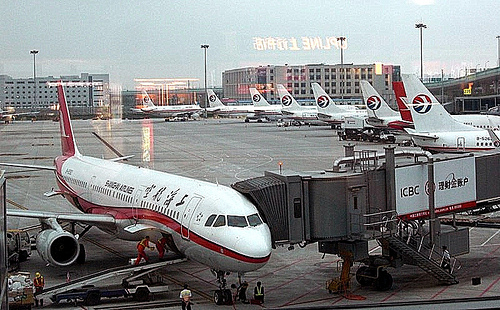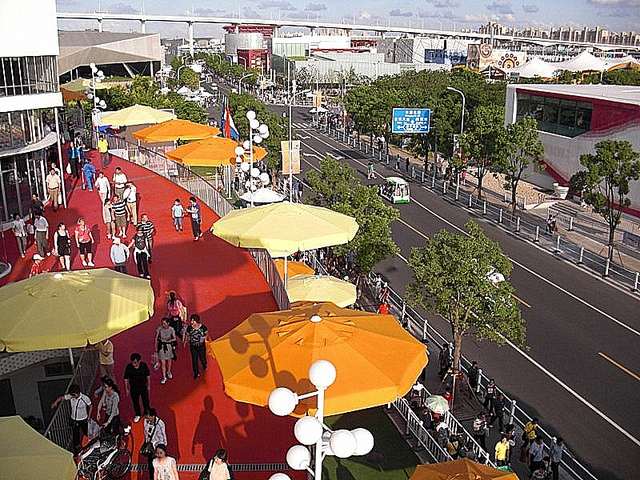 It’s been almost three years since St. Louis’ business and political leaders started lobbying for the creation of a Chinese air freight hub at Lambert-St. Louis International Airport. We are now awaiting the results of a feasibility study currently being conducted by several Chinese airlines.
It’s been almost three years since St. Louis’ business and political leaders started lobbying for the creation of a Chinese air freight hub at Lambert-St. Louis International Airport. We are now awaiting the results of a feasibility study currently being conducted by several Chinese airlines.
The key issue in making “The Big Idea” work is logistics. St. Louis is competing with established hubs in Chicago, Atlanta and Dallas. Those cities are far ahead when it comes to the logistics networks required to reliably move goods from the airport to the consumer and vice versa. This is one of the greatest challenges faced by the China Hub Committee.
Freight forwarders have already built networks and routes that guarantee their shipments will timely go where they are needed. If an American Airlines airplane breaks down in Chicago it’s relatively easy to forward the cargo to the next (United) plane out. This redundancy is of great value. Lambert would have to compete by offering faster customs clearance, more expedient handling and competitive pricing while at the same time building its own logistics network.
Currently, most cargo between China and the U.S. is flown by American carriers. Due to the trade imbalance between the two countries flights from China to the USA are usually full (and profitable) while it is hard to fill up the return flights. American carriers have an advantage over the Chinese on westbound flights (to China) because they can use their domestic networks to consolidate freight on fewer flights.
The Chinese want to compete with these established cargo networks in the U.S. They want to fly cargo to and from China on Chinese airlines and in the process establish their own network. This would be very hard to accomplish at Chicago, Dallas or Atlanta. Enter Lambert.
Our region’s ability to fill up the planes for the return flight to China is the single-most important issue that needs to be resolved. Missouri beef and pork are commodities that would help accomplish this. The recent news that China is lifting the ban on importing beef from the U.S. is certainly a step in the right direction.
Naysayers like Boyd Group International call St. Louis’ effort futile, mainly because of the logistics issues mentioned above. Indeed, strong arguments can be made against a Lambert China Hub case but the very important fact that it would be the Chinese themselves running the show in St. Louis seems often overlooked. This is the foremost reason the Chinese are looking at Lambert.

{the Shanghai World Expo showcases the growing consumer strength of China}
A case could be made for other under-utilized airports in the Midwest and we are certainly not the only ones talking to the Chinese. St. Louis’ effort however is bi-partisan, supported by the city, region, state, and Washington, DC. There are strong players on the team with deeply-rooted and extensive connections.
Opponents argue that we don’t need this hub because it will make it easier for the Chinese to import their goods to the U.S., resulting in more jobs shipped overseas. Realistically, the Chinese do not need Lambert to bring their goods to the U.S. market. On the flip side, the Chinese middle-class is growing fast and demanding higher-priced, quality products. A Lambert hub will give Chinese carriers an opportunity to establish their own logistics networks and make shipping our products back to China profitable by filling up their airplanes with goods manufactured or grown in the USA.

{carp and cows are just two products that may fill China-bound flights}
With a Chinese decision that a Midwest cargo hub is a viable option significant investments will follow to establish a bridgehead in St. Louis. This will not only create jobs but also provide the region with direct connections to China and (in a later stage) the world. With both China and Brazil emerging as economic powerhouses it’s easy to predict a surge in the flow of goods between those countries. St. Louis has an opportunity to connect the two, as it is strategically located for cargo routes between large parts of South America and Asia.
Operations would likely start with only a few flights a week. Once the concept is proven successful this could become tens of flights a day, especially after adding South America to the equation. Lambert could become a true global cargo hub, fed by spokes from Asia and South America.

{St. Louis is well positioned to be the hub of a Brazil-U.S.-China trade route}
One airline studying the cargo hub idea is China Eastern. This company is based at Shanghai-Pudong, the most important airport for U.S. cargo in China. China Eastern will join the Skyteam alliance in mid-2011. Combined passenger-cargo flights, code-shared with Delta (itself a Skyteam member) might become a reality as a positive side-effect of a cargo hub at Lambert.
“The Big Idea” presents us with an opportunity that doesn’t come along very often. St. Louis could become an important center of global economic activity and experience the most transformational development it has seen in decades. Let’s hope the news from China will be good news.
 It’s been almost three years since St. Louis’ business and political leaders started lobbying for the creation of a Chinese air freight hub at Lambert-St. Louis International Airport. We are now awaiting the results of a feasibility study currently being conducted by several Chinese airlines.
It’s been almost three years since St. Louis’ business and political leaders started lobbying for the creation of a Chinese air freight hub at Lambert-St. Louis International Airport. We are now awaiting the results of a feasibility study currently being conducted by several Chinese airlines.
